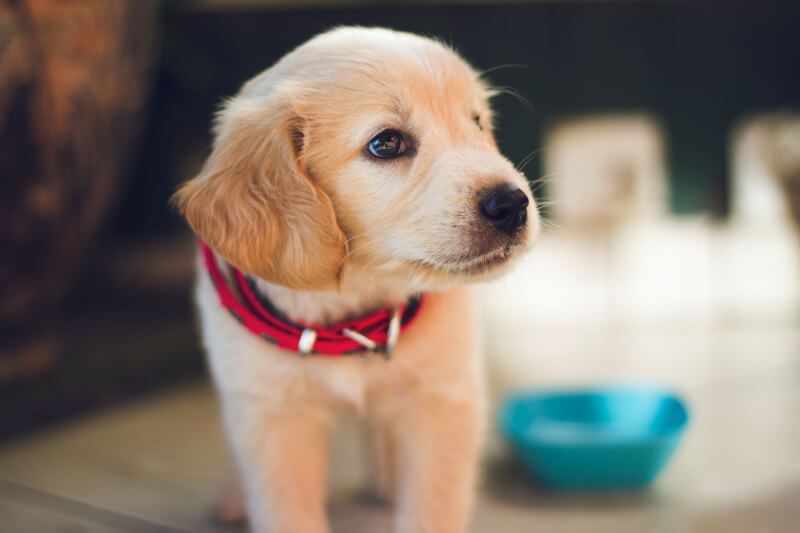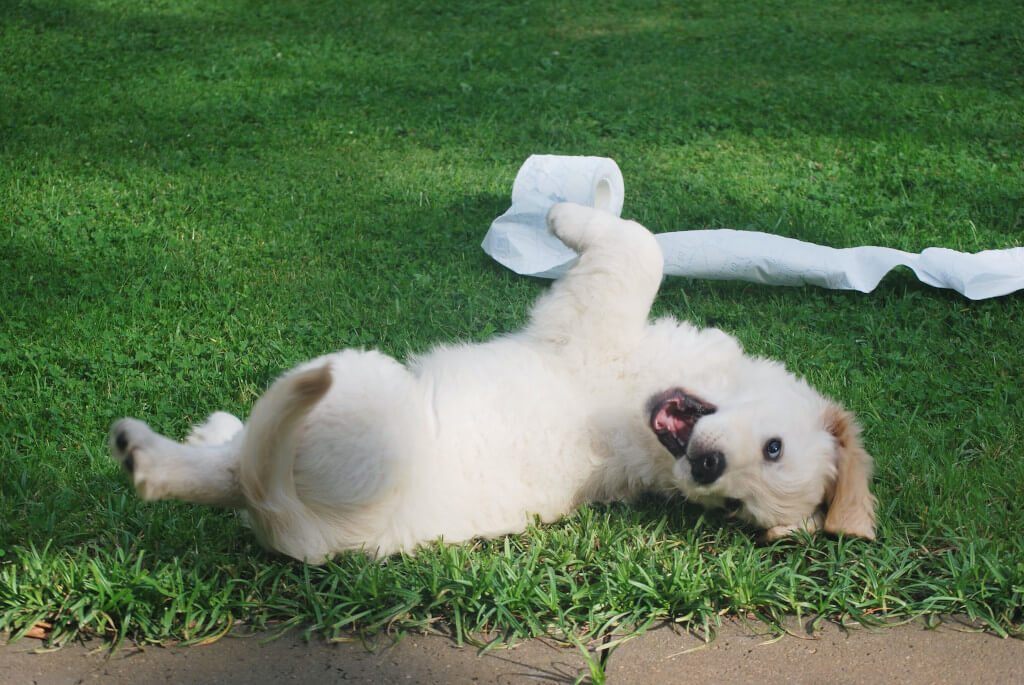Nearly time for your fur baby to come home; are you ready? To make sure you and your new dog can settle in and get along, we recommend “puppy-proofing” your home. We’ve put together this checklist to help you get ready for your new puppy and the adjustments to your lifestyle that will be necessary once you bring them home from the shelter.
Determine Where You Will Keep Your Puppy for the First Few Months
To ensure the safety of your new puppy and for the sake of your sanity and convenience when cleaning up after him, it’s important to keep him confined to a specific room in the house. Limiting your puppy to one or two rooms will make house training much simpler, as there will be no accidents in the puppy’s off-limits areas. A puppy’s natural inclination is to sniff around, lick, and chew on whatever it finds. Since it will be challenging to puppy-proof your whole home, pick one or two “puppy-friendly” rooms where your new puppy can safely sleep, eat, play, and be.

Your puppy will do best in an area of the house that is near the heart of the action, rather than in a quiet corner. Puppy parents often leave their dogs in the kitchen or laundry room, or even the sunroom or patio area, where there’s constant activity. Hard floors, which can be wiped down more quickly than carpeting, are common in these settings as well.
Limit your puppy’s access to the rest of the house by installing baby gates, a puppy playpen, or provisional hurdles in entryways. Take precautions to prevent any gates or barricades from falling and hurting your puppy, and be constant about keeping him or her in the designated area. They aren’t learning obedience or boundaries if one day they are not allowed in the living room and the next day they cry until you carry them to the couch for a nap. Your puppy will be better prepared for obedience training if you are consistent with them from the beginning.
Take Precautions to Ensure the Security of Your Yard
Fencing in your garden is a must, and you should never leave openings so small that your dog can squeeze through them. In addition to removing potentially lethal mushrooms from your garden, you should also avoid keeping any plants known to be toxic to dogs. Ensure your dog knows how to get into and out of the pool from the side away from the fence when the pool is open. Put away the trash and keep the garage supplies where your dog can’t get to them. Always make sure there’s plenty of water and shade for everyone.
Get Rid of Any Potentially Dangerous Plants or Objects
Many common houseplants are toxic to dogs and cats, so they should be kept out of reach of curious pooches. Learn more about how popular houseplants and garden plants can be harmful to your pet.
Additionally, make sure that all potentially dangerous liquids, such as antifreeze, are stored safely out of children’s reach. There is a danger of ingestion or toxicity from medicines, and your puppy can choke to death on small parts from children’s toys just like they can in humans. For the safety of your dog, ensure he or she cannot get into any of the trash cans, especially the ones in the bathroom where sharp objects like shaver blades, paper clips, and earbuds might have been thrown away.
Keep All Water Bodies Covered

Remember to always flush with the lid down or close the bathroom door when bringing home a new puppy to prevent it from getting into the water. Your puppy must not have access to any body of water where he or she could drown, including a pool, pond, well, or borehole.
Cover and Protect Wires and Cables
If you want to hide your cords from view, use something like a PVC pipe or a spiral cable wrap. This will not only keep the area neat, but it will also shield the cables from your puppy’s sharp teeth and prevent the dog from being electrocuted. Use a wide variety of colourful, squeaky, and papery puppy toys to occupy your dog and prevent him from chewing on anything unsafe. Don’t ever leave your pooch unattended, even when playing with toys, but know that toys are much less likely to cause harm.
Don’t Leave Any Trash Cans Out in the Open
The same idea applies here; dogs have an uncanny nose for detecting rotting food and rubbish. You can prevent accidents and poisoning by preventing pets from getting into the trash or by investing in a pet-proof can.
Do Not Go Out of Town or Leave Your Puppy at Home Alone
Because of the rise of the remote worker, it is now more feasible than ever to raise a family in the comfort of their own home, complete with a new puppy. But if you can’t spend a great deal of your day at home with your new puppy, you should either take it with you or find somebody to puppy-sit for you. Any dog under the age of 12 months old isn’t supposed to be left alone throughout your work day, particularly not in new surroundings, so ensure they are monitored and played with at all times.
Keep Human Food Out of Their Reach
Puppies can quickly learn the location of food sources. His dog food, as well as any human foods that are known to be harmful to dogs, should be hidden away when you can’t supervise him to prevent accidents, overeating, and possible poisoning.
My New Puppy is Sleepless and You Inquired as to Its Proper Sleeping Quarters

However, our recommendation that you keep your new puppy confined to a designated “puppy area” does not apply to the question of where your puppy must sleep. Your puppy will benefit greatly from developing a sense of trust, love, and security in you in the initial few months of their adjustment to life in your home. This means spending the night in the same room as you, preferably in your bed.
Pet parents often train their puppies to sleep in a crate next to their beds. Puppies will feel more at ease and secure if they are not separated from the people and things they know and trust, such as you. They may wake up several times in the night for the toilet or because of noises in the beginning, but with you nearby to meet their needs, they will soon develop a sense of confidence and security. Your new puppy will benefit from having a bed because it will provide them with a safe place to retreat to when they are feeling anxious or stressed. Place the dog bed inside the crate if you plan on sleeping with your puppy next to you, as this will become his or her haven as they get older.

